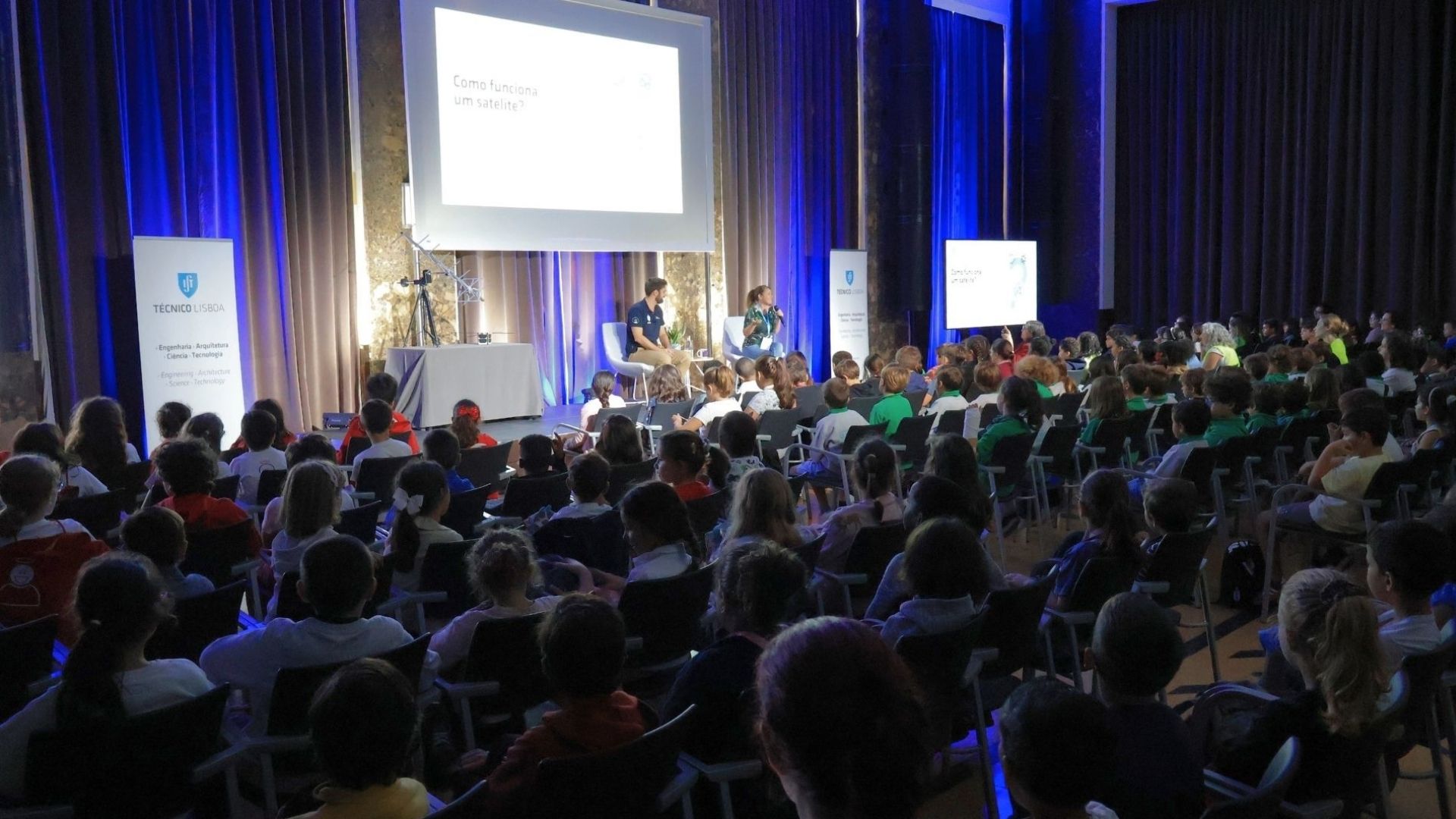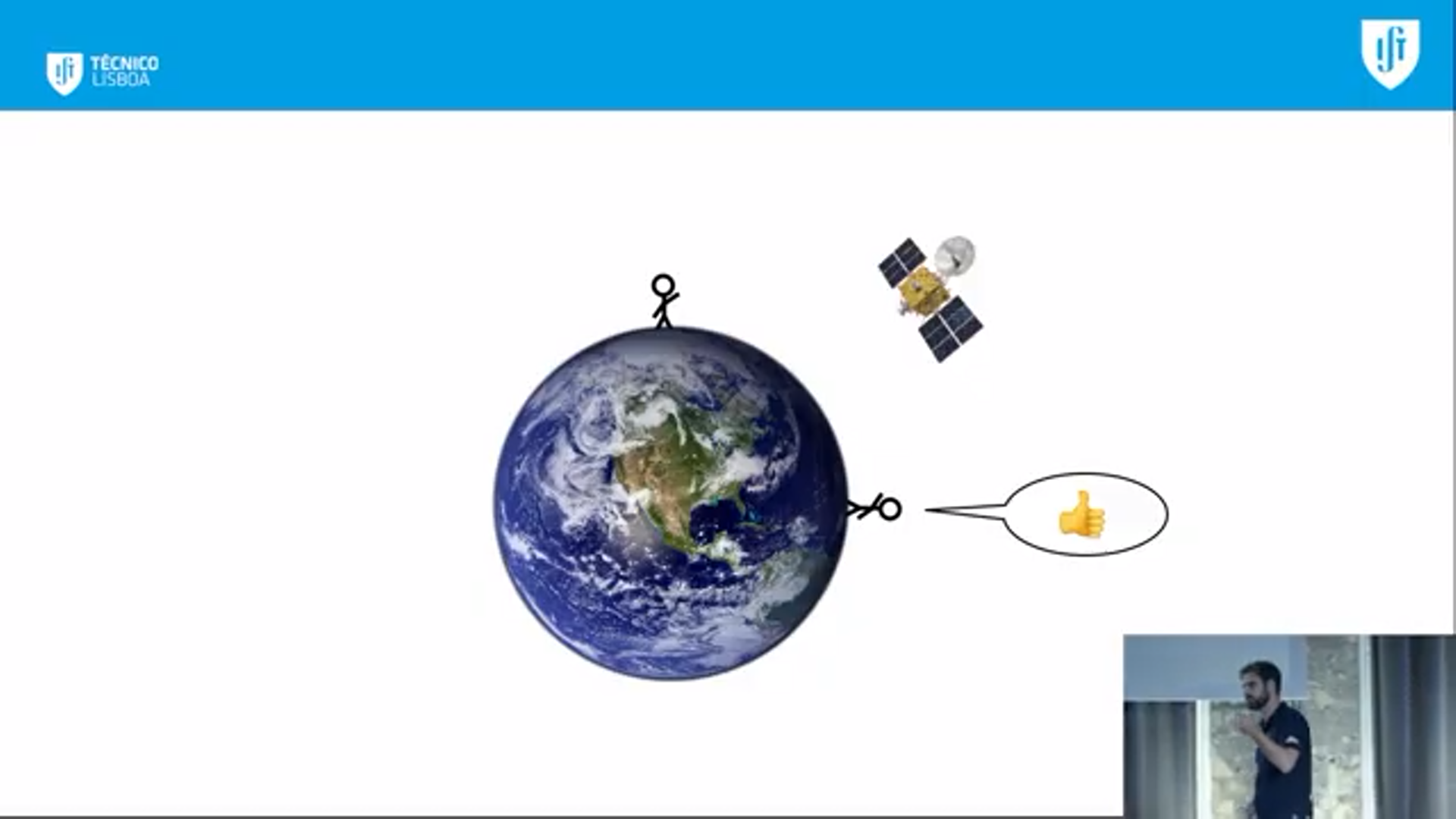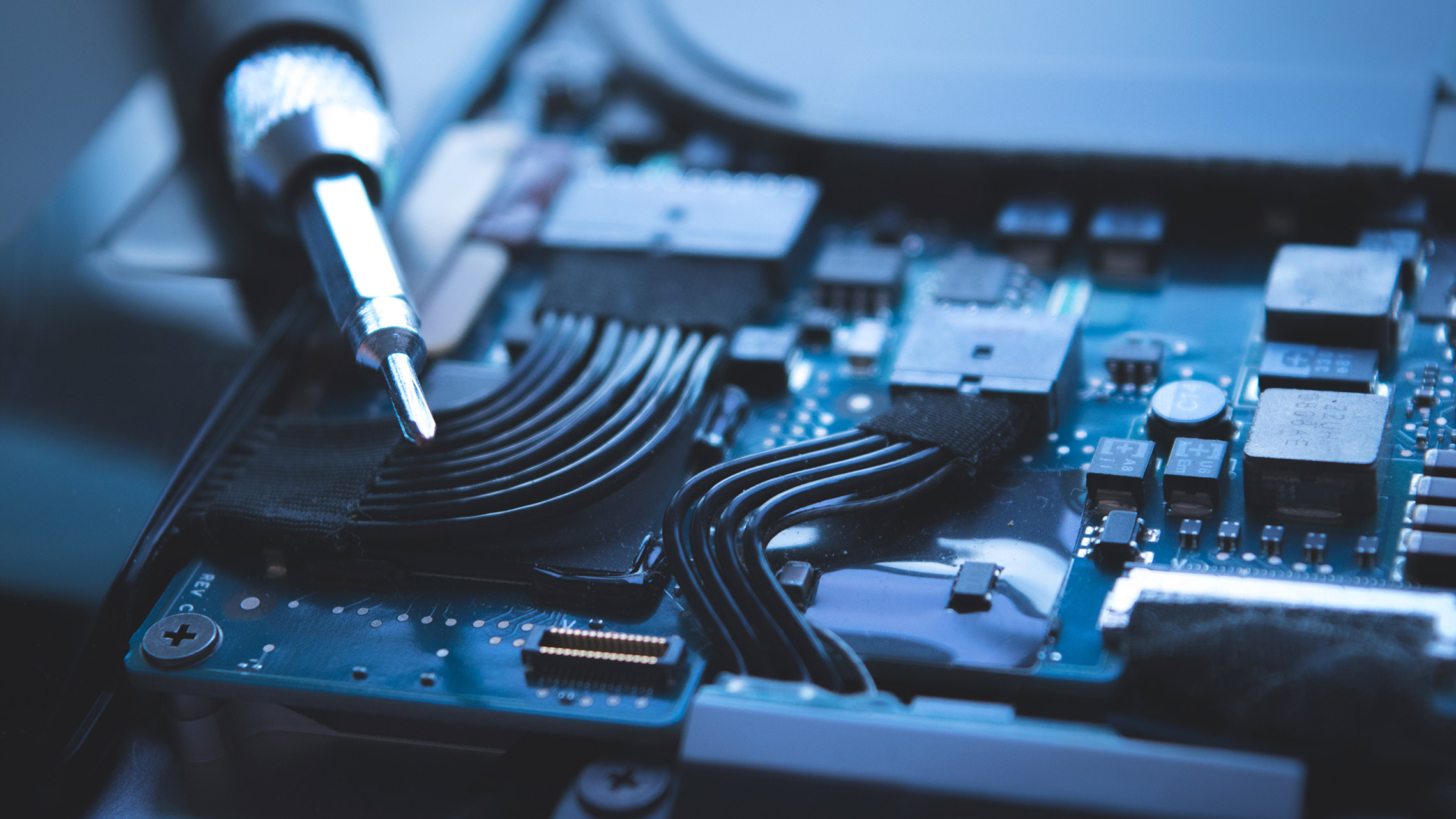"How does a satellite work?": João Paulo Monteiro answered questions from dozens of primary school children

On October 8, nearly two hundred primary school children filled the Grand Hall at the Alameda campus for the return of the "Explain it to me like I'm 5" initiative, promoted by Técnico. The first session of this school year, which coincided with the World Space Week, focused on the construction and operation of satellites and answered dozens of questions from curious young minds.
João Paulo Monteiro, Técnico professor and researcher at the Institute for Systems and Robotics (ISR-Lisboa), began by answering the question: "What is a satellite?"
"Very simply, a satellite is an object that humans, that we, place in space (...) and we say a satellite is in orbit when it moves around the Earth."
— João Paulo Monteiro, Técnico professor and researcher at ISR-Lisboa
But what is a satellite for?
The researcher explained that in order to use a mobile phone to communicate, signals (electromagnetic waves) must be transmitted through towers. However, because this type of signal travels in straight lines, the Earth’s curvature becomes an obstacle for long-distance communication. “So, what can we do? Instead of talking directly to the person or to a tower, we talk to a satellite.”

Satellite communication / Explain it to me like I'm 5
"One of the reasons we launch satellites into space is that they can see a large portion of the Earth at once, so we can talk to people who are far away from us."
— João Paulo Monteiro, Técnico professor and researcher at ISR-Lisboa
João Paulo Monteiro went on to explain what satellites are used for, how they are built, and what happens after they are placed in orbit. Using ISTSat-1 — a satellite developed by Técnico students and professors — as an example, he described how satellites are made up of hundreds of components, assembled like LEGO bricks: "Our satellite has 7 or 8 computers inside it." He also demonstrated how the satellite communicates once in orbit, playing a Morse code signal received in the control room that echoed through the Grand Hall.
"How do you know so much?"
After the main presentation, the researcher answered several questions from the children, including whether satellites can be seen through telescopes, why scientists wear protective suits during assembly, whether it’s possible to build satellites in different shapes, how they stay in orbit, and even how the entire process is funded.
Due to the limited time and the overflowing curiosity of the children, many questions remained unanswered. The excitement in the room was undeniable and was rewarded with a diploma: their very first lesson at Técnico.
Watch the full episode here:
https://www.youtube.com/watch?time_continue=1539&v=jYgw3MR7X2I
